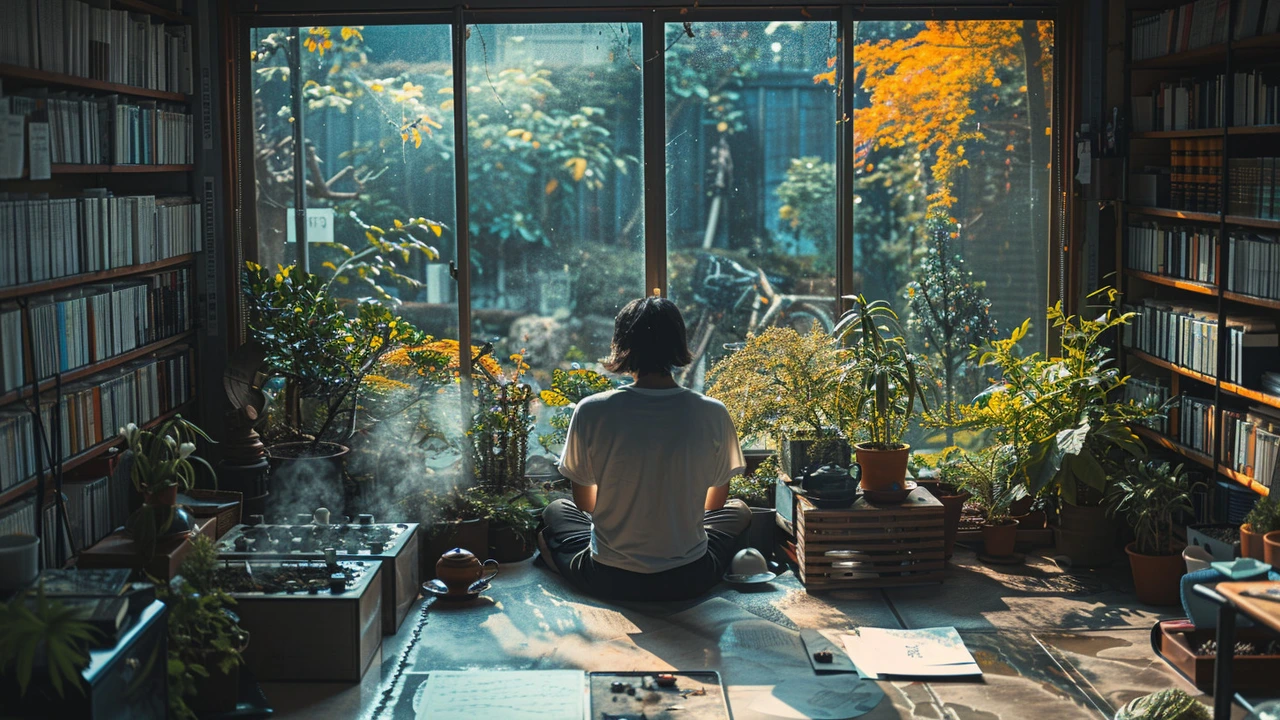Introduction to the Complex Relationship
The intersection of mental health and creativity is a topic that has fascinated scientists, artists, and philosophers for centuries. It's a complex relationship, one where science and art intersect to weave a narrative that's both intriguing and enlightening. The idea that creativity—a quintessentially human trait—can play a significant role in our psychological well-being is not only fascinating but also carries profound implications for how we understand and nurture our mental health.
The tendency to romanticize the 'tortured artist' archetype has led to a plethora of myths surrounding creativity and mental health. However, recent studies have begun to paint a more nuanced picture, showing that the relationship between these domains is far from straightforward. In fact, creativity has been found to serve both as a potential source of psychological distress and a therapeutic tool for healing and growth.
The Science Behind Creativity and Mental Health
Delving into the scientific studies, it becomes evident that the brain's creative processes are intricately linked to our emotional and psychological state. Neuroscience has shown us that engaging in creative activities triggers the release of neurotransmitters such as dopamine, which play a key role in our feelings of pleasure and satisfaction. This biological underpinning suggests that creativity can act as a natural antidepressant, providing a powerful counter to the stresses of modern life.
Moreover, psychological research has drawn connections between creative expression and improved mental health outcomes. Studies have consistently found that individuals who engage in regular creative activities—whether painting, writing, music, or any other form of artistic expression—report lower levels of anxiety, depression, and stress. This evidence underlines the therapeutic potential of creativity, highlighting its value not only in clinical settings but also in everyday life.
Case Studies: Creativity as a Catalyst for Healing
Many compelling case studies illuminate the healing power of creativity. For instance, art therapy has been extensively documented as a successful treatment for trauma survivors, offering a non-verbal mode of expression that can often articulate feelings and experiences that words cannot. Similarly, writing, even in a personal journal, has been shown to provide significant relief for individuals dealing with grief, anxiety, or depression, helping them process and make sense of their emotions.
One particularly moving example comes from a music therapy program for veterans experiencing PTSD. Participants reported feeling a reduction in their symptoms and an increased sense of connection with others. These stories not only showcase the diverse applications of creativity in mental health treatment but also underscore the profound impact creative expression can have on our psychological resilience and recovery.
Nurturing Creativity for Mental Well-being
Understanding the potential of creativity to enhance mental health naturally leads to the question: how can we nurture our creative side for better psychological well-being? Fortunately, incorporating creativity into our lives is both simple and accessible. It starts with setting aside time for creative activities, regardless of skill level or artistic talent. The act of creation itself, rather than the final product, is where the therapeutic value lies.
Additionally, experimenting with different forms of creative expression can help individuals discover what resonates most with them. Whether it's picking up a paintbrush, writing a poem, or crafting a DIY project, the key is to approach these activities with an open mind and without judgment. Creating a supportive environment that values creativity, both at home and in the workplace, can also play a critical role in fostering a culture where mental health and creativity flourish together.
The Role of Society and Culture
Society and culture play pivotal roles in shaping our perceptions of both mental health and creativity. Cultural attitudes towards mental illness and creative expression can significantly impact how individuals experience and engage with their creative and psychological selves. In societies where mental health is stigmatized, or creativity is undervalued, individuals may struggle to find the support they need to explore the therapeutic benefits of creative activities.
As such, advocating for a cultural shift that recognizes the importance of mental health and celebrates creativity is crucial. By fostering greater awareness and understanding, we can pave the way for more inclusive and supportive environments that encourage individuals to explore the full potential of their creative and mental well-being.
Practical Tips for Incorporating Creativity into Everyday Life
Incorporating creativity into one's daily routine doesn't require grand gestures or significant investments. Simple practices, such as doodling during a break, experimenting with creative writing prompts, or exploring new hobbies, can make a substantial difference. Furthermore, leveraging technology, such as apps and online platforms, can provide access to creative tools and communities that offer inspiration and support.
It's also important to recognize and overcome the barriers to creativity, such as fear of failure or judgment. Adopting a mindset that views creative endeavors as explorations rather than evaluations can help in mitigating these obstacles, encouraging a more free and fulfilling creative expression.
Conclusion: Embracing Creativity for a Healthier Mind
The intertwining paths of mental health and creativity offer a road to understanding the human condition in a way that enriches both our personal and collective experiences. By recognizing and nurturing the relationship between these two aspects of our lives, we can unlock a powerful toolkit for enhancing our psychological well-being. In doing so, we not only contribute to our individual health but also to a more empathetic, creative, and mentally resilient society.
As we continue to navigate the challenges of the modern world, let's remember the healing power of creativity and its capacity to transform our lives in the most beautiful and unexpected ways.

